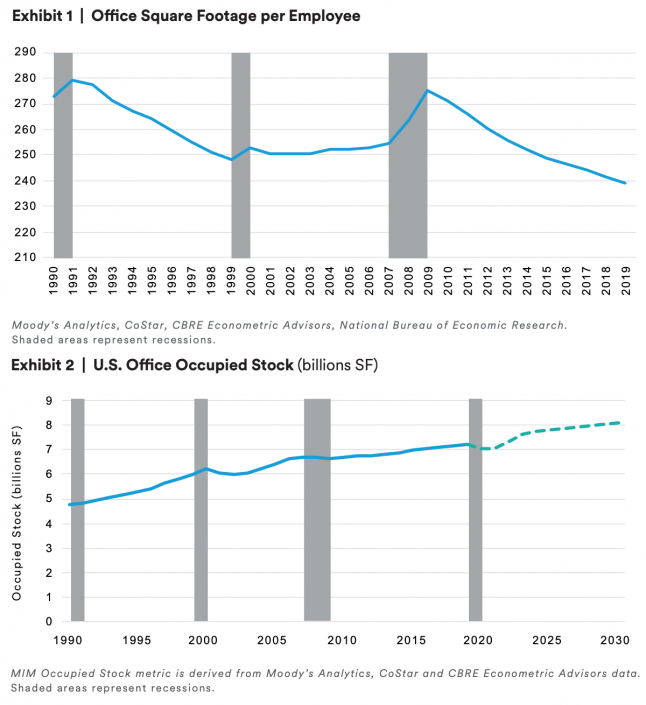Twitter’s declaration last week that employees would be allowed to work from home permanently raised eyebrows in the commercial real estate world. But not everyone is sold on a remote-work takeover.
A recent research report from MetLife Investment Management calls for “a more nuanced approach” to the issue, noting that two outcomes of the pandemic — higher rates of remote work and demand for “pandemic compliant” office configurations — are likely to have offsetting impacts on demand.
While skeptical of any long-term impact on demand for office space, MetLife researchers say they “expect many firms to try (and fail) with permanent work from home arrangements in the near term.”
The analysis cites a number of studies over the past decade that have found that full time working from home reduces productivity, while partial working from home (one or two days a week) increases it. Partial working from home should have less of an impact on office space demand, because workers will still need space when they do come into the office — and may also be less willing to share desks through “hotelling” in a post-pandemic world.
Additionally, the analysis concludes that post-coronavirus office setups are somewhat likely to reverse the recent trend towards densification: “We believe it could be reasonable to expect 25% of office tenants to adopt pandemic compliance (with at least six feet distances between desks) as a result of this crisis.”
As the below graphs from the analysis show, while office density has had its ups and downs over the past three decades, the total amount of occupied office space in the U.S. has consistently trended upwards with just slight dips during recessions.

